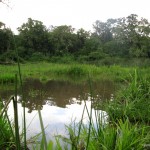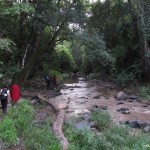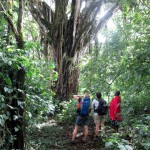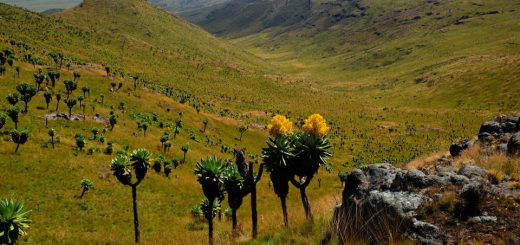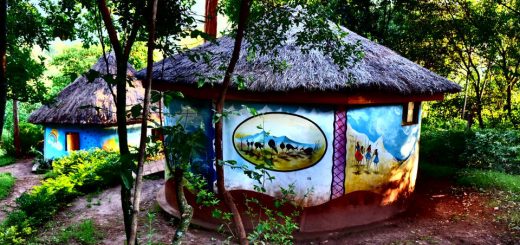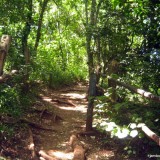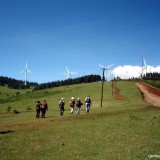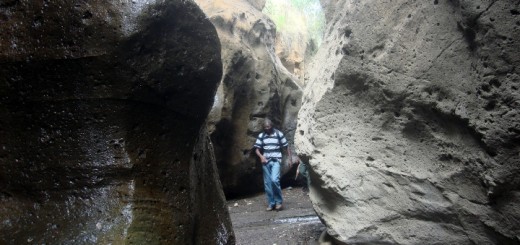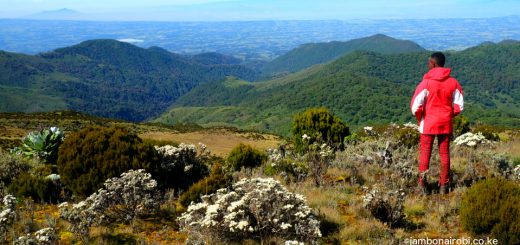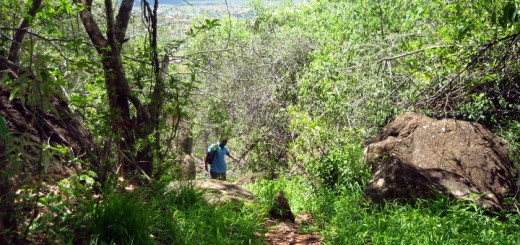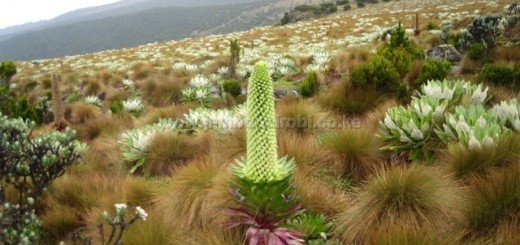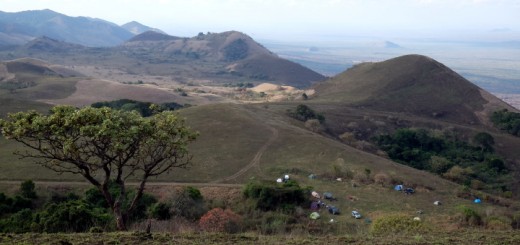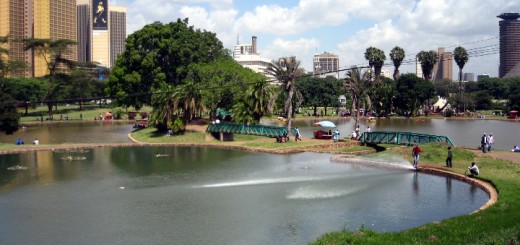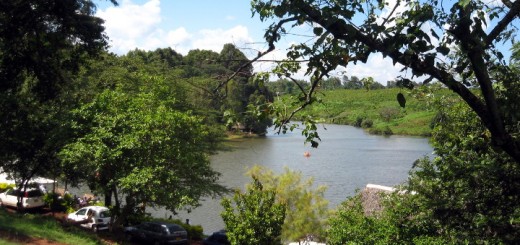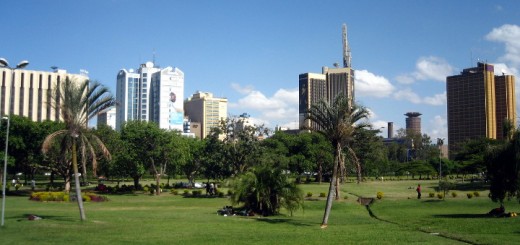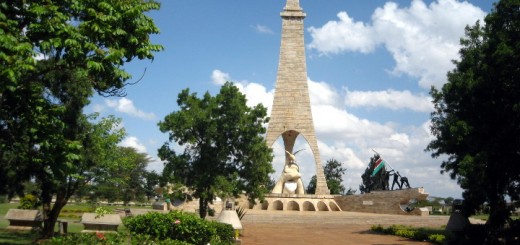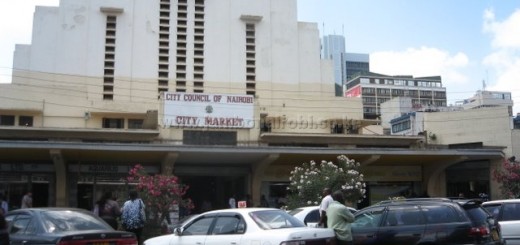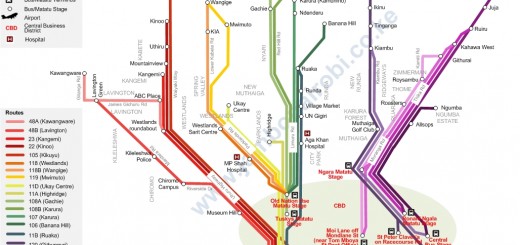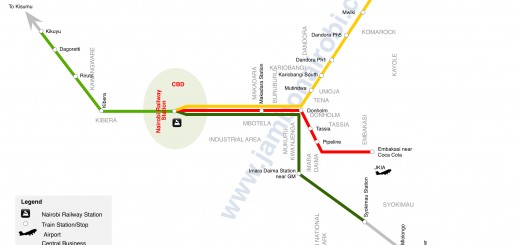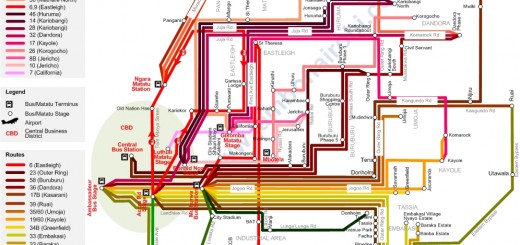Loita Hills Trekking, Morijo to Entasopia
| Distance from Nairobi | About 245km |
| Starting Point | Morijo |
| Ending point | Entasopia |
| Walking Duration | 3 days |
| Terrain | forest trails |
| Difficulty | easy to moderate |
The Loita Hills in the Southern Rift Valley is one of Kenya’s last frontiers of unspoiled wilderness. Trekking from Morijo to Entasopia takes three days of hiking through a tropical forest with breathtaking landscapes, a wide assortment of wildlife and a dazzling array of wild flowers, indigenous trees among other plant life.
Stretching from Maji Moto near Narok town at its northern end, to Entasopia at the base of the Nguruman Escarpment to the south, this mountain range is home to one of the few ungazzetted forests in Kenya, solely managed by the local Maasai community. This 33,000 hectare forest offers some of the best hiking trails in Kenya at altitudes of over 2100m above sea level, with panoramic views of distant mountains and lakes from various vantage points.
- Meadows on loita hills
- Swamp in loita forest
- Mountain stream in loita forest
- View from the loita hills summit
- Strangler fig in loita forest
- Going down nguruman escarpment
Route Description
The scenic landscapes at Morijo, a Maasai settlement on the forest edge, contrast sharply with the typically hot dry Maasai countryside we are accustomed to. This area enjoys cool temperatures with rolling hills covered in expansive green meadows and clusters of trees. As you make your way from this place towards the forest, you encounter scattered modern Maasai homesteads (no manyattas here!), each with an adjoining maize, beans and potato garden protected with thorn bushes, and herds of livestock grazing along the forest edge.
As you enter the forest, manmade trails are soon replaced by animal trails that generally head towards swamps and rivers. On the first day, the forest is interspersed at various points with glades offering an opportunity to bask on the inviting lawns. After walking for about 5 hours from Morijo, the trail eventually leads to the first campsite, next to a swamp at the head of Kanunka River. The night sounds at this campsite include croaking frogs, tree hyrax calls, chirping crickets, hyena noises, and the occasional leopard growl.
On the second day, the trail dives into the equatorial forest, goes over a river crossing next to an abandoned lodge in the forest, and then follows the course of a long meandering swamp. Along the banks, you encounter Bushbucks and Waterbucks grazing quietly. The silence is occasionally broken by the loud calls of Colobus Monkeys, as they swing between tree branches high above at the edge of the swamp. Soon the trail leads back under the canopy of the forest, occasionally emerging onto clearings that are dotted with large boulders sticking out of the ground. From one of these clearings, the highest point in Loita Hills at 2400m, you can see the majestic Mt Kilimanjaro, Oldonyo Lengai, an active volcano in Tanzania, and Shompole Hill to the south of Nguruman Escarpment. This part of the forest is also inhabited by herds of elephants and buffaloes, promising unforgettable sightings if you are lucky. The trail eventually bursts into the open at the second campsite at Esoit Neigero. The night once again is filled with a rich mixture of jungle sounds.
On the third day, the trees and vegetation along the trail changes gradually from equatorial to dry land varieties. The soil texture also changes dramatically as you descent from the high elevations of Loita Hills to the moderate height of the Nguruman Escarpment. There is a waterfall in this vicinity that offers an opportunity for a swim in the cool waters of Entosapia river, before going to Entosapia campsite. This campsite is perched on the edge of the Escarpment, with magnificent views of Lake Magadi, Ewaso Nyiro River at the base, and the distant Mt Olorgesailie in the Rift Valley.
Getting There
When driving from Nairobi, take the lower escarpment Naivasha Road until Mai Mahiu, then turn left and go all the way to Narok town. A short distance further on, take a left turn to go to Naro Osura and beyond to Morijo. You’ll need a 4WD vehicle to get there. The total distance is about 245km.
The return journey from Entasopia goes past Magadi, Kiserian and Ongata Rongai to get to Nairobi.
Entry Requirements
The Loita Hills Forest is managed by the local Maasai community. To access it, you therefore need to get in touch with one of the guides from the local community. Typical fees you’ll be expected to pay include:
Camping Fee: Ksh 1,000 per person per day (this goes to the Community)
Guide Fee: Ksh 2,500 per day
Donkeys and their Maasai handlers (optional): Ksh 700 and Ksh 1,000 per day respectively
You will also need to provide an allowance for the Maasais’ food for the duration.
Guide
An excellent guide for Loita Hills hiking is Robert Rerende on 0720657558.

